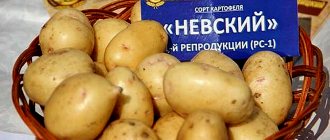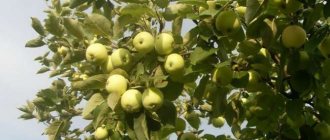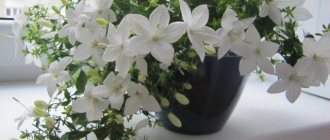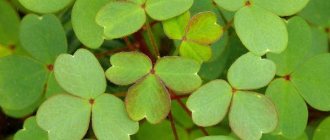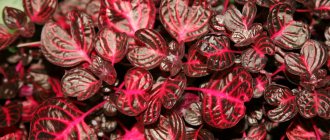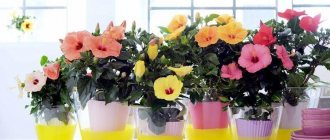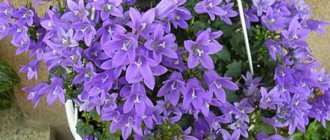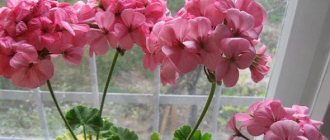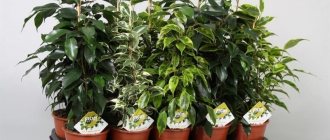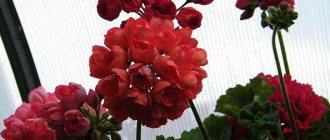Geraniums (pelargonium, kalachiki) have a huge number of advantages and everyone knows them, and caring for geraniums in winter at home only brings pleasure, delighting with its greenery. There are more than 50 species of this plant. Indoor geranium fits well into any home interior and brightens it up with its bright and beautiful colors, as it blooms all year round.
Geranium came to Europe from South Africa in the mid-twentieth century, and was immediately loved by aristocrats due to its ability to decorate. Over time, it became popular among ordinary people.
Geranium care
Home care for geranium is determined by its southern origin. This is a plant that loves the sun very much. It is better to place it in the house in the brightest place, especially in winter. In summer, pelargonium can be planted in open ground outside. After being exposed to fresh air, it takes on a luxurious appearance, and new leaves and flowers appear. Blooming geraniums should be fed periodically to ensure that the flowers are bright and numerous. To do this, use liquid fertilizer, which is diluted in ordinary water for irrigation. In summer, fertilizing is done every second week. In winter this is not necessary. Geranium blooms in early spring and blooms until mid-winter. For normal growth of indoor geraniums, a normal room temperature of 20° C is suitable. But these flowers do not like drafts. Water the balls not with a very large amount of water, but constantly. The soil for these plants should always be moist. When watering, it is necessary to avoid getting water on the leaves; for this reason, spraying is never done.
When caring for pelargonium as a houseplant, many gardeners worry when its leaves begin to turn yellow. But this is quite normal. Yellow leaves may be caused by natural dieback. This phenomenon is observed when moving geraniums from the street into the house in the fall; yellowed and fallen leaves are an inevitable and natural process. Thus, adaptation to changed conditions occurs. Sometimes this happens because it is time to replace the pot with a larger one.
Winter care
Geraniums do not tolerate cold well. Therefore, all care for pelargonium in winter consists of caring for the flower, which boils down to keeping it in a sunny, warm place. Even the slightest cold snap can cause pelargonium to die.
One way to preserve the balls in winter is to place them in spacious pots that allow the roots to grow freely. Then you need to trim the geranium, leaving only half or a third of the plant in height. You should also not forget about regular watering and a sunny location.
Proper watering
Caring for indoor geraniums at home requires proper attention to watering. In summer, it is watered abundantly, while avoiding waterlogging of the soil. In winter, watering geraniums should be moderate and air humidity should be low. Sometimes there is a lack of flowering. This greatly upsets flower growers. The reason for this is often an excess of moisture in the soil.
Transplantation
For better flowering when caring for geraniums, replanting is recommended. But only in the case when its roots require more volume in their development or when there is an accidental overflow of water during the irrigation process. When replanting, it is necessary to take into account that the balls do not like spacious pots.
When placing a flower in a new pot, you must ensure good drainage to avoid water stagnation after watering, otherwise the roots may rot. There is no need to add any special ingredients to the geranium substrate. Ordinary soil, which can be purchased in a store, or even just soil from the garden is well suited for it.
Reproduction
Indoor geraniums are propagated using cuttings. With this type of reproduction, success is guaranteed. But this can also be done with the help of seeds, which will allow the plant to grow more compact, with better flowering and larger inflorescences. But seeds require more attention and are a troublesome and difficult task for novice gardeners.
When propagating pelargonium by cuttings, it is necessary to cut a stem 10 centimeters long from the top of the shoot with 4–5 leaves. Then it is placed in water for several days, and after several roots appear, it is planted in a pot with soil. But there is another option, when the cutting is immediately planted in a light mixture of peat and sand, and installed in a semi-dark place, to accelerate the growth of roots rather than stems. With regular watering of the plant, in 1–2 months a full-fledged specimen of geranium will grow.
Sowing is usually done in March to provide the plant with sufficient sunlight. Seeds, pre-treated with manganese solution, are sown in a not very deep container that has good drainage. After laying the seeds on the surface of the soil, they are slightly pressed into it. Then cover with polyethylene and place in a warm, shaded place. After the seeds germinate, the film is removed, allowing access to fresh air. And when two leaves appear on the stem, they are planted in small pots or cups, at the bottom of which there is a mandatory hole to remove excess water when watering.
With proper care, indoor geraniums can live up to 30 years, and during this time they will be able to delight everyone with their beautiful flowers almost all year round.
You will be interested to see photos and videos on caring for geraniums.
Video - How to grow geraniums correctly
In Soviet times, geraniums were very popular; on almost every windowsill and balcony one could see their lush multi-colored inflorescences. It is also called differently - fragrant pelargonium, because of its unique sweetish aroma.
After the USSR collapsed, the popularity of geranium went away, only recently flower growers began to grow it again. Its medicinal properties played an important role in this.
Kalachiki plant (geranium, pelargonium): home care, photo + video
Today we will talk about rolls or geraniums (pelargonium), which have been the most famous and popular home ornamental plants for many years.
I also have such flowers in my flower collection, and over time I began to grow quite a lot of varieties. The rolls are very unpretentious, the flowering is magnificent, and care is quite simple. Of course, there are some peculiarities in care, but they are simple, and even a novice gardener can grow such a plant. I want to share my experience of caring for rolls or geraniums at home.
Geranium: general information
Geranium's scientific name, pelargonium, is translated from Greek as “stork” or “crane.”
. The plant received this unusual name because of its fruits – long as a bird’s beak.
There are more than 400 species of geranium in the world, which can be found almost all over the world; about 40 species are found in Russia. It is noteworthy that in Germany geranium is called “stork’s nose”, and in the USA and England it is called crane grass.
This is a meadow annual or perennial plant, growing up to 60 cm. The leaves are soft, covered with hairs, and have palmate-lobed or palmately dissected shapes. Large flowers have 5 regularly arranged flowers, usually collected in inflorescences. They can be terry and smooth; shades include white, red, purple and blue.
Among the most popular types
homemade geraniums contain:
In addition to “pure” varieties, there are a huge number of hybrids that you can grow yourself. Among domestic species, the name pelargonium is often found. They belong to the same geranium family, but differ in appearance
. Despite this, caring for pelargonium at home, like caring for geranium, is almost the same.
Short description
Everyone knows this plant and loves it. In total, more than 400 species of rolls are known in the world, which can be annual or perennial. Almost all varieties bloom for almost a whole year and are a decoration for any interior.
Advantages of rolls (geraniums)
- Some time ago, this plant lost popularity due to the appearance of other exotic flowers, but now it is again regaining its leading position in home flower collections of gardeners. Geranium has a number of undeniable advantages.
- Firstly, this is a brightly flowering beautiful plant that has a long flowering period and does not require special care.
- Secondly, the rolls have a specific aroma and healing properties. The smell drives away many pests, including indoor ones.
- Kalachiki can be grown both indoors and in the garden. There are a lot of varieties, and you can choose to suit every taste. The plant was brought from South Africa. From the 15th to 16th centuries it became a favorite, first in the homes of aristocrats, as a decorative and elegant plant, and then gained popularity among all segments of the population.
Features of cultivation - general recommendations
- In winter, this flower needs to be kept at a cooler air temperature than in other months of the year. However, it should not be less than +10 degrees.
- Unlike many indoor flowers, kalachiki (geranium) is not afraid of the sun and loves it very much. You can place this flower on the south side, and it will delight you with lush greenery and beautiful inflorescences.
- The plant is exotic and tropical, so it can delight its owners with flowering almost 365 days a year. To do this, you need to provide good care and the right amount of light.
- In order for the bush to grow in breadth and be fluffy, you need to periodically pinch the tops of the branches. Flowers that have bloomed should be removed immediately so that they do not take nutrients from the plant. Plants also need pruning.
- Kalachiki rarely get sick, and the cause is poor care and excessive watering. Gray rot and black leg are a consequence of waterlogging of the soil.
Medicinal properties of geranium
In folk medicine, geranium leaves are most often used, since they have the most medicinal properties, even more than the roots.
The chemical composition of this indoor plant contains a lot of biologically active substances: resin, starch, vitamins, minerals, essential oils, carbohydrates, glycosides, terpene alcohols, tannins and phytoncides, which it releases into the air, disinfecting it from microbes and fungi.
And also, with the help of its aroma, it has a calming effect on people. In this case, no antidepressants will be required. If there are pots with pelargonium in the offices, the percentage of chronic fatigue and conflict among employees will decrease, and mental and physical activity will increase.
For treatment, freshly cut leaves are used; they are never dried, but only washed well.
They have anti-inflammatory, wound-healing, antispasmodic, antimicrobial, antiseptic properties, in addition they help stop bleeding, including uterine bleeding, reduce tumors, cure colds, and lower blood pressure.
The list of diseases that this plant helps to cure in a harmless way is quite extensive: blood pressure, insomnia, hemorrhoids, colds, osteochondrosis, fever, radiculitis, gout, dermatitis, diarrhea, otitis media, menopause.
For perfumery and cosmetology, a pleasant-smelling essential oil is obtained from the plant by steam distillation. It can be used as a sedative through aromatherapy. You can also get rid of ear and throat diseases with this oil.
In winter, this oil can be used to cure frostbite of the extremities, and in summer, sunburn. They also treat eczema, bedsores and diaper rash. During the menstrual cycle, the smell of this oil will help relieve pain in women and reduce anxiety.
It is best not to extract this oil yourself, but to buy it at a pharmacy or special stores selling eco-products. Once opened, the oil can be stored for no longer than a month.
Before using geranium in folk remedies, you should study the contraindications:
- Intolerance to essential oils.
- Age up to 12 years.
- Pregnancy and breastfeeding.
- Thrombophlebitis.
- Bronchial asthma.
- Stomach ulcer.
- Varicose veins.
- Allergy.
- Gastritis.
We care for rolls (geraniums, pelargoniums)
As already mentioned, care is the simplest and minimal, but if you do everything correctly, the plant will bloom constantly and will have a healthy appearance and a lush crown.
Place
- The main rule is that there should be a lot of sun, the south side is the ideal place for the plant. Only on very hot and dry days can you shade the window a little so that the leaf plates do not get burned.
- If you place the plant in the shade or in a damp corner where windows open and there are drafts, the balls will react with yellowing leaves and a lack of flowering.
Watering
It is strictly not recommended to water the rolls with cold tap water containing a high content of chlorine and lime. Only warm water is used, which is pre-settled. You can use filtered.
During the autumn and winter months, watering is carried out several times a week as the top layer of soil dries. On hot summer or spring days, water the soil in the pot daily. But you can’t overfill it, so that the root system doesn’t start to rot.
Be sure to make a drainage layer in the flowerpot where the geranium grows so that moisture does not stagnate in the root system. The pot is not very large in size. It is necessary that the roots completely occupy the entire volume. In a pot that is too large, the flower will not bloom until the root system grows.
Humidity
- This plant does not tolerate spraying or showering. Also, do not wipe the foliage with wet wipes. This procedure can only be carried out very rarely when the flower becomes too dusty. High humidity has an extremely negative effect on the rolls.
- If there are plants nearby that need increased moisture and spraying, then try not to get on the geranium.
Temperature
Kalachiki grow well at normal room temperature throughout the year. In the autumn - winter period, the air temperature should be within +10 - 15 degrees. It is worth moving the pot with the balls to the windowsill or to a room that is not so heated.
Fertilizers
- It is strictly not recommended to add organic matter to the soil. Geranium tolerates it extremely negatively.
- During the growing season (growth and flowering), you need to apply fertilizers for indoor flowering plants. The scheme is no more than several times every 30 days.
- Fertilizers are applied in liquid form. It is advisable to combine it with watering.
- During the development period and for longer and more abundant flowering, you can use the following feeding recipe: dissolve 1 drop of regular iodine in 1 liter of water. You need to water along the walls of the pot so as not to burn the root system.
Trimming
- This procedure is usually carried out in the autumn. Leave shoots that should have only 6 - 8 leaves.
- It is necessary to remove branches that grow not from the soil, but from the axils of the leaf blades.
- In the third ten days of February and until the beginning of March, pruning can also be done. Remove the branches and leave only a few buds on the shoots.
- Use the branches that you cut for propagation. Makes excellent cuttings.
- If you want to make the bush of balls more luxuriant and denser, pinch out the top parts of the branches, leaving 4 - 5 leaves.
- In winter, pruning is not carried out.
Geranium propagation methods
Now we have come to the final stage of the article - reproduction. Geranium can be propagated in two ways: seeds and cuttings. And now we will help you evaluate the pros and cons of each method.
Seeds
So, you have geranium seeds and you need to get beautiful bushes from them. Let's start with what you need to know before you get started:
- Seed planting time;
- Soil option for planting;
- Germination period;
- Moments of transplantation.
The optimal time for planting is the period when the plant is dormant (early winter - mid-spring).
Next, you will need the correct substrate for planting. , a mixture of turf + sand + peat (in a ratio of 2:1:1) is perfect . Water will not stagnate in it, and the peat will provide a kind of nutrition for the sprouted plant.
After choosing the soil, it is worth preparing the seeds themselves . To do this, they are treated with epin or zircon, and then soaked for 3 hours in water at room temperature.
The seeds and soil are ready - let's move on to planting. We spread the soil 0.5 centimeters thick, put the seeds on top and cover with glass. Place the box with seeds in a bright room with a temperature of +20 degrees.
The plant will germinate within one and a half weeks after sowing. The growth rate depends on several factors: the variety of geranium, room temperature and shelf life.
After 3-4 leaves appear on the young plant, you need to plant the geranium in a pot. In this case, it is important to correctly separate the roots of several flowers that have not yet had time to intertwine strongly. Take a new pot with a top diameter of no more than 10 cm.
The method of propagation by seeds is quite long and labor-intensive. It is not suitable for everyone, as it requires care and deadlines. In the next section we will look at the method of propagation by cuttings, which is used much more often than by seeds.
How to replant rolls
The flower does not really need such a procedure. In addition, the rolls do not like to be transplanted, so this event should not be carried out too often and unless absolutely necessary.
The plant needs to be replanted only when the roots begin to peek out of the pot. It is recommended to plant or replant a flower only in the first half of spring, when the growing season begins.
Choose a new pot that is only a few centimeters larger than the previous one. In a pot that is too large, flowering will not occur soon.
Be sure to place a layer of drainage at the bottom of the flowerpot, and then fill it with regular universal soil for flowers. You can only use garden or vegetable soil.
How to take care further?
In addition to knowledge about reproduction, it is necessary to provide competent care for pelargonium . When the plant is completely planted in a separate pot, it needs to be watered 10 days after that. Then watering is carried out according to the standard scheme for all geraniums: every 4-5 days.
In the first few days, when the pelargonium has just been transplanted, you should carefully monitor the plant. Direct sunlight has a detrimental effect on the condition of the flower. Only after the root system has been firmly established can you add sunlight by placing a pot of young geraniums on the windowsill. Pelargonium, unlike other indoor plants, does not like spraying. You should also protect geraniums from drafts.
The plant needs proper pruning. This way it is updated and new material appears for the development of bushes. With proper care of geraniums, they will soon delight their owners with bright blooms.
If you find an error, please select a piece of text and press Ctrl+Enter.
Reproduction methods
There are several basic methods that gardeners use when breeding rolls. Let's see what is needed for these events.
Seed method
- Unlike many plants, this option for propagating geraniums does not present any difficulties at all. The seed material germinates very well and the germination rate is almost 100%.
- If you plant seeds from balls that you have at home, the grown plant will differ from the mother plant, as it will lose its varietal characteristics. This is especially true for hybrids.
- You can prepare a nutritious soil mixture yourself, mix the following components: 1 part - peat, 1 part - river sand, 1 part - turf soil. Before planting, you need to moisten the soil. After planting, sprinkle the seeds on top with the same soil. You can sprinkle a layer of moistened sand no more than 1.5 cm.
- Before planting, the soil is disinfected with a solution of potassium permanganate so that the rolls do not get sick with such a dangerous disease as “blackleg”.
- Next, the planted seeds are covered with film or glass and the temperature is maintained at +18 - 20 degrees. When the seeds germinate, the shelter must be removed and the temperature reduced slightly to +16 - 20 degrees. Place the container in a sunny place.
- After 2 months, several independent adult leaves will grow. Then you need to carry out the picking procedure, that is, plant the sprouts in separate small pots.
- If there are 5 - 6 leaves, it is advisable to pinch the upper parts of the shoots so that the crown becomes lush and grows.
Cuttings
- Sprouts can be harvested after pruning and throughout the year. But the strongest cuttings will be those cut in the spring.
- Their length should be 7 - 8 cm, leave a few leaves on each. Next, dry the sprout for 24 hours, and treat the cut area with finely crushed activated carbon.
- Then plant the sprout in a nutrient substrate. It should be very loose; you can even use moistened sand.
- When moistening the substrate, avoid getting moisture on the leaves and stems of the plant. The room temperature should be about 22 degrees Celsius.
- There is no need to cover the cuttings. When the cuttings take root, they are then transplanted into permanent pots.
Types and varieties of fragrant geraniums
Geranium is native to South Africa. The leaves and stems of the plant are covered with thin glandular hairs that contain essential oil. When the hairs break off, it enters the air and emits a characteristic odor.
Varieties of fragrant geraniums smell differently - roses, apples, lemons, oranges, pineapples, peaches, mint, lavender, verbena, wormwood, pine, coconut, almonds, caramel.
There are natural types of pelargonium with fragrant leaves - fragrant, curly, pink, oak-leaved, capitate, felt, etc.
Varieties of fragrant pelargoniums of natural species:
- Chocolate Mint (felt). A bush up to 30 cm high with hanging shoots, green leaves with a chocolate spot in the center, smells of mint, small pink flowers.
- Attar of Roses (capitate). About 45 cm tall, the leaves are large, three-lobed, they smell like roses, the flowers are lilac.
- Cy's Sunburst (curly). Small corrugated foliage is light green with a yellow border, smells of lemon, pink flowers.
- Giant Oak (oak leaf). The leaves are large, lobed, and emit a balsamic scent.
- Red-Flowered Rose (pink). The leaves are openwork, palmately dissected, gray-green in color, blooms profusely with bright red-pink flowers.
Today, many hybrid varieties have been bred, which may differ from the natural appearance not only in flowers and leaves, but also in smell:
- Citronella. Dark green, multi-parted leaves with a strong citrus scent, pink flowers.
- Copthorne. The bush is about 50 cm high, the leaves are dark green with a cedar scent, the flowers are purple-pink with red spots.
- Grace Thomas. A dense bush up to 90 cm tall, the leaves are deeply dissected, smell of lemon and raspberries, the flowers are pale pink with bright spots.
- Joy Lucille. Up to 60 cm tall, leaves with a menthol-mint aroma, pink-violet flowers.
- Lemon Kiss. Lush bush about 40 cm, leaves are rough, jagged, with a pleasant lemon aroma, flowers are lilac-carmine.
The intensity of the aroma depends on the growing conditions - air temperature, sunlight and amount of moisture. It is advisable to choose a variety whose aroma you like most and evokes only positive emotions.
Types of pelargonium.
Pelargonium is one of the most popular potted plants for the home. Often in everyday life it is called geranium or kalachik, although in fact they are not the same thing. Pelargonium zonalis is more common in home floriculture. It can bloom throughout the year and does not have a pronounced dormant period.
There is an unimaginable number of varieties of zonal geraniums. They differ in height, color, shape, etc. Depending on the shape of the flowers, double, non-double and semi-double varieties are distinguished. Ampelous geranium is also quite widespread in indoor floriculture. It is used for landscaping balconies and loggias, as well as for growing in hanging pots.
Royal pelargonium deserves special attention. It is more demanding in terms of maintenance conditions, but is distinguished by greater decorative appeal due to large flowers of heterogeneous color.
Types of geraniums with names and photos
Also check out these articles
- How to replant a violet
- Growing mimosa pudica from seeds
- How to fertilize indoor plants?
- Mealybug
Zonal pelargonium
Pelargonium zonal
They are most often called geranium, with rounded green leaves, with a brown, yellowish or white border around the circumference.
The flowers of this group are simple or double, collected in umbels of various colors: from pure white to red and dark crimson. There are races bred for their decorative leaves.
Pelargonium grandiflora
Pelargonium grandiflora
Large-flowered - with strongly serrated folded leaves.
The flowers are umbrellas, large, white or pink with dark cherry spots on all petals or only on the top ones.
Ivy-leaved pelargonium
Ivy-leaved pelargonium
Ivy-leaved - with drooping branched stems and green pentagonal leaves, reminiscent of ivy leaves in shape.
Flowers come in different colors. It is often used as an ampel plant, as the stem is woven.
Pelargonium fragrant
Fragrant pelargonium Fragrant pelargoniums
are the most common pelargoniums. The deeply cut, hairy leaves have a strong aroma. The flowers are white, pink, small.
Geranium is easy to care for.
Watering. Water pelargonium as the soil dries. The plant loves abundant watering, but it is strictly forbidden to overwater it - this leads to rotting and the occurrence of diseases.
Light. The plant is light-loving. Can tolerate light partial shade. On northern windowsills, additional lighting is needed for flowering.
The soil. Indoor geranium grows well in neutral and slightly alkaline soils. To reduce the acidity of the soil, you can add a little ash to the substrate, which is also a good fertilizer. In general, the plant does not require nutritious soil. And even the presence of a ventilated and loose substrate is not necessary. The main thing is to ensure good drainage, which will avoid stagnation of water in the soil and rotting of the root system.
Fertilizer. Like most plants, geranium responds well to fertilizing with mineral fertilizers. However, overuse of fertilizers can lead to chemical burns. Also, you should not feed the plant with organic fertilizers; it is better to purchase a special fertilizer for pelargonium or decorative flowering indoor plants with a high content of phosphorus and potassium. The royal pelargonium will be especially grateful to you for this.
Temperature. If in the spring-summer period geranium feels good at a temperature of 20-25°C, then in winter it needs to create cool conditions - up to 15-16°C. This is especially true for royal geranium, for which the optimal temperature in winter is 10-13°C. Dry air is also harmful to the plant, but geranium does not like spraying. It is enough to place a container of water next to the plant or use special air humidifiers to ensure normal care during the wintering period. Too dry air and high temperatures do not allow pelargonium to gain strength for the new season, and often in spring, instead of a luxurious and lush bush, you can see elongated pale green branches that are not able to bloom profusely.
Trimming. In spring the plant needs pruning.
Young pelargoniums are pinched from above, leaving 4 to 8 internodes for branching. Adult geraniums are pruned to improve their appearance: elongated stems, yellowed leaves and diseased branches are removed. The plant does not require severe pruning; cosmetic shaping is sufficient.
Transfer. To get a profusely flowering plant, it must be transplanted into a small diameter pot. In spacious pots, pelargonium develops and bushes better, but produces fewer flowers. Geraniums are replanted as needed: if they have outgrown the pot or need to update the substrate.
Reproduction. Geraniums are propagated in two ways: cuttings and seeds. The first method is the most popular: the plants quickly take root and grow.
Propagation by seeds is used to obtain more hardy and abundantly flowering plants. Geranium seeds are small and elongated. Germination rate is not too high, so a lot of seeds are planted. Surface sowing in a moist, well-drained substrate. The first shoots appear within a month.
Home care for pelargonium
In the Geraniaceae family there are more than 260 species of this perennial herbaceous plant, differing in overall size, color of leaves and petals. It is not only a house plant, but can also grow in summer cottages; it is often used to decorate parks.
If you carefully care for it and feed it on time, it can grow up to two meters high and from the outside it can be mistaken for a bush.
It has been noticed that if geranium is placed on a windowsill with an open window or on a balcony, then insects will not fly into the apartment, since its specific smell repels them.
In addition, it has a disinfecting effect and can purify the indoor air of harmful substances.
Over time, geranium grows strongly in a pot, therefore, in order to maintain its decorative appearance, at the end of winter it needs to be pruned, forming a crown as desired. Geranium does not like a pot that is too spacious, so the smaller the pot, the better it blooms, since in this case the flower stops spreading roots in length and breadth, and begins to grow leaves and inflorescences.
It is advisable to place the pot of geranium in a well-lit place, but not under direct rays, as the leaves and petals can get burned. But in partial shade it stops blooming. If you periodically forget to water it, then it’s okay, since it easily tolerates drought, but overwatering has a detrimental effect on its roots, they begin to rot and the leaves wither.
It is not advisable to spray it, otherwise the leaves will get sick. Every month it is advisable to feed it with mineral fertilizers with phosphorus.
By the smell you can understand that it is geranium in front of you, and not a plant similar to it. Its wide leaves smell of lemon, and its umbrella-shaped flowers emit a very delicate and sweetish aroma. Therefore, it is sometimes called lemon geranium. With proper care, pelargonium can bloom all year round.
It propagates mainly by cuttings, that is, a cutting with a shoot is cut from a plant, placed in a glass of settled water so that the roots grow, and then transplanted into a new pot with soil. But there are certain varieties that can be propagated by seeds.
Unfortunately, geranium is often susceptible to both viral and fungal diseases. Therefore, as soon as one of the signs of disease is noticed on it, it must be treated immediately, otherwise the plant will no longer be saved. But if she periodically sheds yellowed leaves, then you should not be alarmed, this is a common and normal process.
If you notice that the base of the stem has turned black, it means that the plant is affected by root rot. Dried edges of the leaves indicate a lack of moisture in the soil, which means the plant needs to be watered more often, but not more often than once every two days. If you overwater a flower, swellings will appear on the leaves.
It is necessary to ensure that water does not accumulate in the pan, otherwise the plant may develop gray rot due to its stagnation.
Types of pelargonium
The genus Pelargonium unites about 250 species of different plants of the geranium family. Among them there are herbaceous ones, as we are used to seeing them, and shrubs. The plant called geranium is classified as a separate genus. But often the indoor flower pelargonium is called geranium. The name of the flower comes from the Greek word “pelargos”, which means “stork”. After all, its flowers resemble the head of this bird. We usually call it a kalachik. This is probably due to the round shape of the leaves.
All numerous types of pelargonium, or kalachik, are conventionally divided into:
The hanging ones grow downwards, the bush ones - upwards.
Zonal Kalachiki are plants with beautiful flowers that can have 5, up to 8 (semi-double) or more (double) petals.
Sometimes it's hard to believe that these are all balls. Flowers (photo) can be of a wide variety of shapes.
They are collected in a hemispherical umbrella. Various colors: from white, salmon, pink to burgundy, almost black. There are only pure yellow and blue balls. Flowers are often two colors. In this case, their location can be like this:
- inside – light, outside – darker;
- rim around the edge of the petal;
- different petals are painted in different colors.
The leaves can also be monochromatic or with multi-colored zones (that’s why the ball is called zonal). They can even be three colors. Varieties with very brightly colored leaves are classified as a separate subspecies. Their colors can be red, brown, yellow, white, purple.
Royal (English grandiflora) flowers are so large that they reach a diameter of six centimeters. They, like a princess, require special care. In winter, they need to be illuminated, and the temperature should not be higher than 10 degrees, otherwise flower buds will not form. And they bloom for only 3-4 months.
Rolls of this species are distinguished by dark burgundy spots or dark stripes near the veins on the lower petals.
Kalachiki “Angels” have flowers similar to violas. The 30 cm tall bush blooms all summer.
Many pelargoniums have a strong odor. This flower is called fragrant pelargonium. It blooms with small purple or pink flowers. All its charm lies in its dissected leaves, which smell like mint, lemon, lilac, pine needles, pineapple, roses and many other aromatic plants. Geranium oil is extracted from the leaves of this plant.
Ampelous rolls have stems up to a meter long with small ivy-like leaves and multi-colored buds.
There are also succulent balls, but they are not common here. They are used to create bonsai-style compositions.
The geranium bush grows in height from 10 cm (miniature) to 60 centimeters. But it can be higher, reaching 80 cm (airines). There are also microminiature rolls, the height of which is less than 10 cm.
The plant blooms in our latitudes from late March to November.
What is pelargonium
Pelargonium is native to African savannas. The heat-loving crop easily tolerates dry air. Plants of this genus have straight and creeping branched stems. They have slightly pubescent leaves, round in shape, palmate or palmately dissected. The color of the foliage of different species varies from light green to emerald. Some representatives of the genus have light leaf blades with dark patterns.
The umbrella-shaped inflorescences of the culture consist of 20 five-petaled flowers. Their petals are painted in white, yellow and red in all shades. Varieties with double flowers have been bred. The fruit is a capsule with retained sepals.
Description of geranium
Pelargonium is a source of valuable geranium oil. The flower secretes phytoncides that kill microbes. In cosmetology, indoor geranium extract is used as a component of masks for the face and hair. In folk medicine, geranium oil is used against inflammation, stress, and to improve blood circulation.
Pelargonium species
“Granny's little balls” is what the common people called the most common (zonal) types of pelargonium. Today there are about 75 thousand varieties and hybrids of the crop. The species diversity is impressive in the shape of the flowers and the brightness of the inflorescences:
- Rose-bud Zonal. Double showy flowers look like roses. In inflorescence they look like a miniature bouquet. A rare species found in the collections of experienced flower growers.
- Tulipe-bud. The tulip-shaped variety was obtained through a spontaneous mutation of the plant. The inflorescences look like a bouquet of unopened tulips.
- Stellar Zonal. Due to the pointed shape of the petals, pelargonium is called “star-shaped”. Varieties with double flowers of various colors have been bred.
- Cactus. The flowers of cactus-shaped pelargonium are large, with pointed, needle-shaped petals. The inflorescence has a perky “disheveled” appearance.
- Carnation. The inflorescences look like a miniature bouquet of carnations. The edges of the petals are serrated.
- Ivy-leaved. The ampelous leaves are similar to the leaf blades of ivy. Creeping stems can reach about 1 m in length. The flowers are often double. The variegated species is distinguished by dark leaves with a light web-like pattern and an inflorescence of simple 5-leaf flowers.
- Regal Pelargonium. Each flower is up to 7 cm in diameter. Its contrasting shades, veins highlighted in a different color, variegated spots, specks are a distinctive feature of the species. Flowers can have single or double petals.
- Angel. An ampelous appearance with a lush green mass and small flowers of delicate color. The middle or edging of light petals is often burgundy (red).
- Unique. The “Unicum” species combines several varieties with small petals of a multi-color palette. The leaves are intricately dissected. There are varieties with corrugated foliage, which emits an unusual smell. For example, the leaves of the Paton's Unique species smell fruity.
Pelargonium varieties
Reproduction
Kalachik is a flower that is easily propagated by cuttings. They are broken off or cut off from the side branches or tops. The length of the cutting should be from 5 to 7 centimeters and have at least two leaves. Plant immediately in a permanent place in light soil. The cut area is treated with ash.
You can take cuttings all year round. But it is better to do this in the spring - in March or April, and in the fall - in August and September.
Cuttings help improve the appearance of the plant. If it is very long and the flowers are placed only at the top, cutting off the top causes the growth of lateral shoots from dormant buds. Later they will be covered with flower stalks.
Withered flowers are removed so that new ones can form as quickly as possible.
Pelargonium cutting technology
Reproduction of the ball is not difficult. Sequencing:
- Prepare cuttings 5-7 cm long. The lower cut (oblique) is immediately below the bud, the upper (straight) is above the bud.
- Leave the raw materials for 2-3 hours in a place where there is no direct sunlight. The ends of the cuttings will dry out and form a film.
- Sprinkle the cut with crushed charcoal or Kornevin powder to prevent rotting.
- Prepare plastic cups by making drainage holes.
- Fill the containers with soil.
- Moisten the substrate. It is recommended to treat with boiling water and a concentrated solution of potassium permanganate to kill parasites.
- Stick the cutting 2-2.5 cm into the cooled soil.
- Glasses with shoots are stored at temperatures from 20 to 220 C. Pelargonium cuttings do not require additional shelter. It will be needed if the leaves have turned yellow or wilted.
- Such flowers are hidden under a jar or larger transparent glass for several days. Having noticed an improvement in the condition of the plants, the “greenhouse” is removed.
After the first abundant watering, the cuttings are “watered” with caution. The plant does not have roots yet, so it does not need much liquid. Severe waterlogging will lead to rotting of young pelargoniums. There is no need to spray the shoots. The success of cuttings will be indicated by the roots that appear through the transparent walls of the cup. The established plant will actively grow and form new leaves.
The flower is transplanted into a pot if there are underground shoots along the entire perimeter of the container.
Some connoisseurs of pelargoniums buy special peat tablets for propagation. They will increase in volume if you soak them for 1-2 minutes in warm water.
Lighting
Kalachik is a flower that loves sunlight very much. It easily tolerates even direct sunlight. This allows you to grow rolls in flower beds. In very hot weather, they are shaded a little so that the leaves do not turn red or burn.
Grows well in partial shade. You can create beautiful compositions using such as balls and flowers.
Water the plants as the soil dries out. Kalachik is a flower that loves moisture, but it should not be flooded. In summer, the ball is watered more often, and much less frequently during the dormant period. But still, the soil must be constantly moist.
Excess moisture comes out through the pan. But the drainage in the pot must be of high quality.
The roll does not need to be sprayed. He loves dry air.
Kalachiki are indoor flowers. But in summer they feel better in the fresh air.
And feeding them won't hurt. It is carried out once every two weeks with liquid complex mineral fertilizer. You can use the “Bud” product.
Climatic conditions for geraniums
Since geraniums are native to South Africa, you should create a similar climate in your home. Of course, this does not mean at all that you need to constantly maintain the temperature in the room at 30 ° C and fill the geranium with water, as in tropical rain.
It is enough to keep the soil in the pot moist and provide sufficient illumination for your “ball”. The most comfortable temperature for a flower is from +10 to +30 degrees.
The need for geraniums in good lighting is due to the fact that in its homeland there is the greatest number of sunny days a year.
Application
The fragrant roll has bactericidal substances. While in the air, they kill many pathogenic microbes and even staphylococcus.
Fragrant pelargonium helps treat sore throat. For this, an infusion of leaves is used.
For otitis media, geranium leaves are kneaded and a compress is applied to the ear, which relieves pain and reduces inflammation.
The same compress, but with more leaves, is applied for radiculitis or osteochondrosis.
The smell of the fragrant roll has a beneficial effect on patients with neurasthenia, hypertension, heart and stomach diseases, and suffering from insomnia.
But its main purpose is to decorate our lives. As soon as the threat of frost has passed, a huge number of rolls of all kinds and colors appear on city streets.
Pelargonium: general information
The culture comes from India and South Africa. At the end of the 16th and beginning of the 17th centuries, the plant came to England: sailors brought it for the botanists of the Royal Gardens. Europe became acquainted with pelargoniums at the end of the 17th and beginning of the 18th centuries.
The British scientist George Tradescan began breeding this flower. He called each new variety an angel. The result of hard work is variegated plants, dwarf species, pelargoniums with two-color and double flowers.
Currently, biologists know about 280 types of crops. These are annual and perennial herbaceous plants, subshrubs and shrubs.
Pelargoniums have managed to win the worldwide love of both professional gardeners and simply lovers of indoor plants. They are undemanding to care, reproduce easily, and produce large, colorful inflorescences. The flower is used for indoor decoration, as an hanging plant, and used to decorate balconies and garden areas.
This plant is often called flowering geranium. In everyday life it is called “kalachik”. The name of the genus itself comes from the Greek word for “crane”: the long seed pod was too much like the beak of this bird.
The species most often found on window sills is zonal pelargonium:
- The thick stems (height from 30 to 80 cm) have pubescent leaves with a strong odor. They are decorated with dark concentric circles.
- The plant is cultivated by dividing the bush, seeds or cuttings. If you need to get flowering geraniums as soon as possible, you should use the last method. With this method, the new perennial will retain all the qualities of the parent variety.
Thanks to this pattern, the plant received another name - bordered pelargonium. Bright umbrella inflorescences consist of simple or double flowers. Their shade can be white, pink, raspberry, orange, red or cherry.
Pelargonium is an ancient indoor plant, recognized for its unpretentiousness and beauty.
Why doesn't the little ball bloom?
- This may be because the room is too warm in winter and the flower cannot enter a dormant state. Therefore, it continues to produce leaves rather than flower stalks.
- Due to damage by mites, weevils and other pests or gray rot.
- Due to improper watering. From excess moisture, the plant rots and withers. With its deficiency, the leaves dry out.
- Root damage by fungal and bacterial diseases.
- A very large pot.
Among these causes, diseases and pests are of particular concern. Without eliminating them, the ball will disappear.
